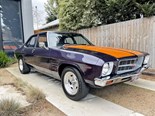Get it up on a hoist + EPV mysteries and badge engineering - Mick's Workshop 440



|
In Morley's absence, young Mick gets up on a hoist, and we get inside goss from some industry legends
Mick's Workshop
I’ve got a customer’s Corvette up on the hoist at the moment and it’s a great example of why it pays to go over a car properly before you buy it, if you can. Don’t get me wrong, it’s actually a pretty nice thing and I have seen a lot worse.
There are some infamous examples out there of mudguard restos, which is shiny on top and crap underneath.
This example isn’t that bad, but a more careful inspection would have given the buyer some pretty useful leverage when it came to the final price.
For example, I’m not wild about how the rear shocks have been mounted, as they’re inconsistent from one side to the other and the bolts used don’t really seem to be up to the task.
The brakes on this one haven’t been right from day one, and there are a mixture of reasons for that. First the calipers and master cylinder needed a proper rebuild, instead of a quick clean and paint. The brake lines are pretty suspect as well, so we’re ditching those.
For the owner, the good news is that none of the issues are terribly difficult or expensive to fix and we’ll have it right in no time. Just those few things will get the car driving properly – it’s a great-looking thing and deserves to be right.
But here’s a bit of advice, if you’re about to blow a wad of cash on something like this – and they’re worth substantial money – find a local mechanic and get it up on a hoist. An hour of their time won’t cost a fortune and could easily save you 10 times the cost. Plus you’ll see things on a hoist that just can’t be eyeballed with the car on its wheels.
Someone with a bit of experience, who works on this stuff all the time, knows where to look for trouble and, if nothing else, it’s probably worth the peace-of-mind.
(Ed’s note: Morley is on leave at the moment.)
Here's my tip
Road run it
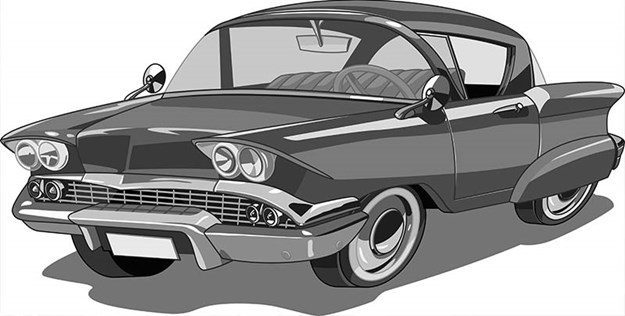
With the recent Covid lockdown, many of us have had to resort to starting our old cars in the shed them running. The moment you can, get it out on the road, even if it’s just for a couple of kays down the road to the shops for groceries. Static running gets the engine working its juices, but the transmission and chassis need exercise, too, and a short run is better than nothing.
*********************
LETTERS:
May the Force be with you
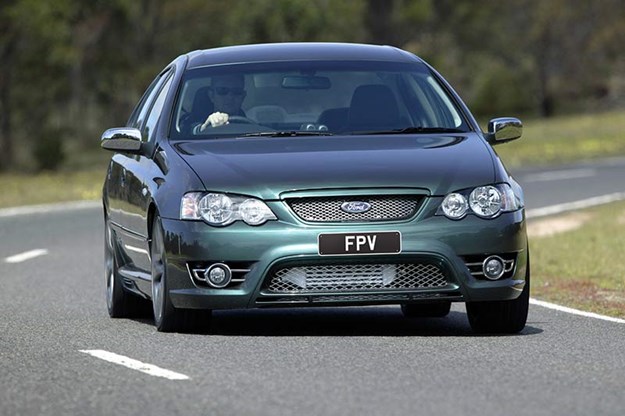
I was just reading your column in the March issue and felt, for historical accuracy, I needed to correct you on your point regarding the Force 6 and Force 8 models.
These pre-date Rod Barrett’s time in the chair. The models from BA production launch through to Orion (FG) were conceived by myself and Gordon Barfield, along with a team of many others (engineers, stylists etc). Your very own John Bowe was also heavily involved from a driving dynamics perspective.
Rod was still General Manager of FPR (race team) at that time and there was no cross over into the road car business - apart from us leveraging it for marketing purposes.
I, along with many others, left the business in early 2007 as part of a restructure - even though we had just celebrated a record sales year in 2006. More restructures were to follow before the eventual demise of the entire business.
The Force 6 and Force 8 were designed to go head to head with HSV’s Senator models and were part of the expanding FPV line-up. The cars appealed to those who wanted performance with luxury and less overt exterior styling.
I particularly liked the Force 8 with the Regency Red leather interior - which nicely matched the dark woodgrain tones, small boot spoiler and the chrome highlights including the side view mirror scalps.
Unlike HSV, (where I had been Sales and Marketing Manager), our strategy was to offer two clear streams of business - Turbo 6 and V8. This was key to our success.
The later FPV marketing really focussed too much on the GT alone and this was a mis-step in my opinion. Despite a major new model in the FG, subsequent FPV sales never eclipsed what we achieved in 2006 with the older BF models.
As you’d also be aware, car manufacturing lead times are measured in years not months before launch to the public, so the vast majority of model planning is done well in advance. Our planning already included supercharged V8s and even the idea of a 351kW version.
Not to take anything away from the late Rod Barrett and the many others who brought these latter vehicles to market but equally important the historical facts are kept accurate. There were many initiatives that Rod brought to the table including the GS sedan and ute models that were not in our plan.
Your readers may also be interested to know that some aspects of our original product plan were changed - which meant some potentially iconic vehicles were never to be seen. There were also a few areas where decisions were made that were not necessarily for the better in my view.
These included the dropping of the Force nameplates (replaced with GT-E or something equally forgettable), a very tame FPV Territory (F6-X).
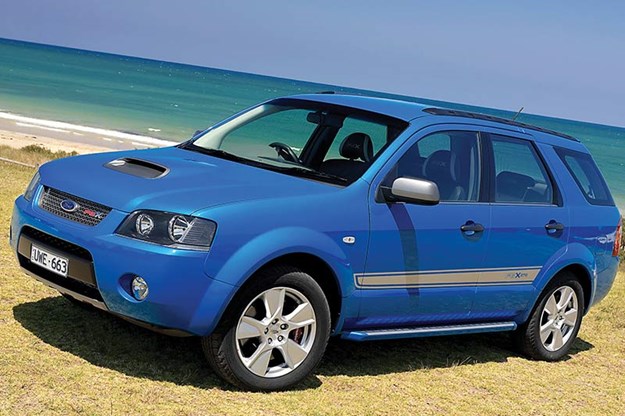
The FPV Territory turbo was originally conceived as a stealth-like version of the F6 Typhoon/Tornado series - with dark argent F6 wheels, lower ride height, optional red leather interior per the Force models. It was to be called the F6 Tempest. More AMG style. Another mistake was the dropping of the Typhoon and Tornado names when they reverted to the alpha numeric F6 only. Then there was the John Goss Special, a latter day Superbird sedan and ute and a few others. At least the BF GT 40th Anniversary and Cobra sedan and ute models saw the light of day.
I guess, with the end of Australian car manufacturing, it is all academic now, however, I thought it was worth putting the record straight.
By the way, I may be a little biased, however, if you want to watch a really good series on the history of car manufacturing in Australia, you can’t go past Shannons End of an Era. Just google it to watch all four episodes.
Mark Behr
Formerly FPV Product Planning and Brand Marketing Manager
MANY THANKS, Mark. It’s not every day we get the insight of someone who was on the ground at the time. Clearly there were some missed opportunities with the range, which is a little frustrating to hear, but I guess we’ve all been guilty of that from time to time.
I couldn’t agree more regarding alpha-numeric nameplates. They’re often meaningless or easily forgotten and I’d much rather talk about the Typhoon in my shed than the XYZ1.
The Shannons End of an Era series is excellent and a great way to spend a quiet afternoon.
Quality Issues

Paul Beranger Book Crayon to CAD shares the best years of Australian automotive design
Enjoyed your piece in Issue 437 on ‘Quality, definition of’.
As a front-line victim to the model-sharing logic (or lunacy) of the Button Plan, I can recall a couple of peripheral issues that emerged during my time as Chief Designer at Nissan.
On the announcement of model-sharing, Ford, Holden and Nissan design teams all had ambitious plans for the redesign of key components that differentiated their particular models, including front end sheet metal, lamps, wheels and interior features. Regrettably the reality was completely different. Corporate bean counters were reluctant, viewing the business opportunity from another, more mundane perspective… spend nothing.
Nissan’s product relationship with Ford eventually ended up with changed model emblems and wheel covers. Patrol became Maverick and Falcon Ute became, after much navel-gazing by Nissan’s marketing gurus …Nissan Ute! It was not until the abortive Pintara/Corsair relationship that serious efforts were made to give customers more choice. But that’s a story for another day!
However Nissan’s relationship with Holden was somewhat more strategic, and successful. Holden’s Chief Designer Phillip Zmood and I met clandestinely in a Port Melbourne pub under the cloak of darkness and smoke, outlining the expectations of our companies in terms of model differentiation. Phil and I had worked together at Holden, so we were open to share our design ideas and feed them back to our respective management, recommending the best way forward for both companies.
Fortunately, as a stopgap measure, we were able to dip into Nissan Japan’s Pulsar parts bin and use parts from the Japanese domestic Langley model to impart some sort of brand differentiation for the Clayton built N12 range. Nissan Australia also developed the Pulsar ET, a turbo hot hatch as a hero model. Later, in 1987, when product sharing continued into the N13 model, more advanced planning had occurred. Holden became Nissan’s Family II engine supplier and unique model differentiation, requiring design work by Nissan Australia, achieved greater brand separation.
A key point of interest in these model sharing experiments was uncovered during early market research conducted by the car companies. Here the Australia consumer perception of local and ‘imported’ brands came into sharp focus.
Clinic attendees assumed that the Ford version of the Patrol would be cheaper, built to an inferior quality level and less reliable compared to the Patrol, although Maverick would be more stronger than Nissan’s offering. Remember, they were built on the same Japanese production line. Only emblems were changed!
The same occurred with the Falcon Ute. The Nissan version would be of a higher quality, however would not be as strong as the Falcon! The ute was a harder sell for consumers to accept, the Falcon being quintessentially Australian, well before the influx of Japanese one-ton pickups.
These consumer views were compounded by the fact that Nissan had a superior warranty period to Ford, which included all the Nissan badged Fords.
A similar issue was identified during the Nissan and Holden relationship with Pulsar and Astra, initially with the N12 and later N13 models.
Consumer research showed that the Nissan Pulsar would be built to a higher quality than the Holden Astra, but the Astra, being a Holden product, would be cheaper and built more for Australian conditions!
And of course the Toyota/ Holden relationship is another more complex story!
This perception got lost in the later misery for Holden, as product sourced from global GM or affiliate plants diluted Holden’s well-deserved reputation for designing, manufacturing and selling cars built for Australian conditions.
Despite its perceived failings as a purveyor of quality cars, generations of Holden designers and engineers can stand proud, demonstrating to the world that cars engineered for Australian conditions can be built and sold into global markets.
Paul Beranger
Paul is the author of Crayon to CAD, an incredible book on Australian car design from an insider’s point of view. You can find it at c2cpublsihing.com.au.
Gemini Man
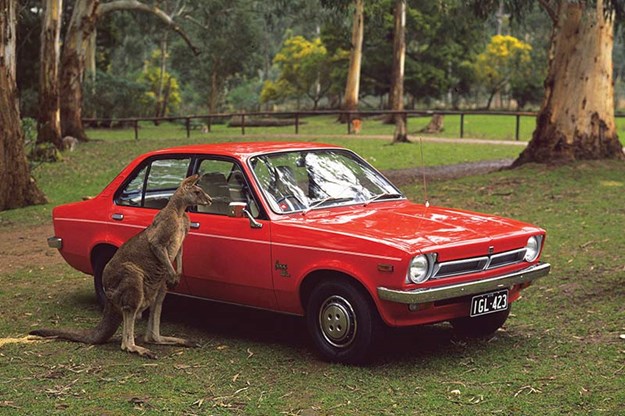
Gemini has a proper handbrake
Elky the Gemini man here, just a note on the whole electric park brake issue, we know it’s obviously done for reasons of packaging and economics as it’s easier to move a switch for LHD or RHD markets.
However the hoon in me dictates I always test handbrake effectiveness in every car I drive and sometimes not in a legal way. I just bought the missus a new shopping trolley in the form of a RAV4 which much to my dismay has a electric park brake. Of course I proceeded to try a test at walking speed, assuming the fancy electronics would just beep at me angrily and tell me I am not obeying road rules, instead it made a very unhappy sound and we left it at that!
When the minister for war and finance parked it in the garage I clearly heard the rear brakes lock on, to me it sounds like the servo noise you get in RC cars, so I surmise once it’s in position it won’t move until the servo gets the reverse polarity to release it.
I wonder how long it will be before I need to get the tools out to fix it as we plan on handing it down to the kids when they start to drive, progress? Hardly.
Anyways back to the shed to work on the Geminis that have hoon-approved handbrakes that make me smile.
Elky Silas
THERE SEEMS to be a lot of people out there preserving and restoring Geminis at the moment, and I can understand why. They’re good value, simple to work on and the rear-drivers in particular are good clean basic fun.
As for electronic handbrakes, it just seems like a good way to complicate what should be a really simple idea. Some electronics are great – fuel injection, for example. But handbrakes? Nup. Maybe I shouldn’t complain as they’ll probably provide me with regular work for years to come!
Red alert
Now that you mention red motored EJs – GMH definitely produced prototype red motored EJs as mules to test the new engines. Whether any of these escaped is a matter for conjecture.
I have no doubt that some of the engineers would have used them.
They also tested the new 253 V8 engine in HR Holden’s. I have a work colleague who swears that her parents owned a factory 253 HR.
Steve Rule
JEEZ, THIS debate has been going how long now? It’s probably over six years, which has to be some sort of record. Steve, your explanation of engineering cars escaping into the wild is entirely plausible and we’d love to think there might be one or two still out there. Righto you lot, check what’s under that tarp in the back of the shed!
Hobart Terror
From 1959-1964, FC to EH, at no time did I ever see an EJ with a Red motor I think readers may be mistaken by the EJ tail lights as fitted to the EH ute. It never happened.
I have owned 11 Holdens. 1953 was first one, an FC ute was next and then FB van, an EK station wagon, then an EJ station wagon.
An EH Premier was then purchased – a beaut car. Next was a 1969 Monaro in Daytona Bronze with ivory vinyl top as a special order. Then, with a growing family I purchased a 1968 307 Brougham, a great car. Next came a 350 Statesman, then an HQ wagon.
My 53 was modified, as all the young blokes cars were then. I used to make floor shifts for them and also track rods and lowering blocks (alumium), cast by Hobart foundry. The original sample was made by me from a piece of pine and they kindly made it.
Oh, I served my time at Hobart Tech with none other than John Goss who lived just around the corner from me. We spent many a time after Tech terrorising Hobart streets!
Thanks for your great articles over the years I really enjoy them,
Bob Jones
WHAT FANTASTIC memories, Bob. I love the story of terrorising the streets in the company of a young Goss. You had some iconic cars there, mate – who knew they’d be worth so much now?
Knockers are back
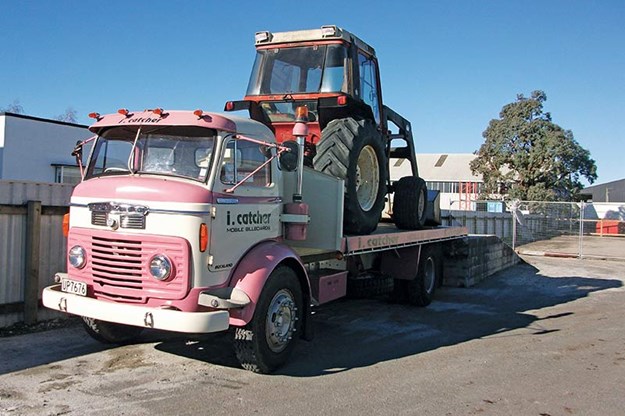
Commer still going strong in 2020
In relation to the May 2017 Unique Cars, Here come the Knockers letter in the workshop section, I was interested to reply to Graham who was the first contributor under that heading.
He mostly gets the details about TS3 correct, which is unusual, because most forum type contributions about Rootes TS3 engines ("Commer Knockers") range from wildly exaggerated to complete nonsense.
Attached is a photo of the 1962 Commer TS3 I restored, loading up a tractor I purchased in Napier, (NZ) a couple years ago.
I drove down from Auckland to Napier in the morning to pick up the tractor and stopped off on the way back to Auckland for a swim in the hot pools at Lake Taupo and was back in Auckland Sunday night.
Truck drivers going the other way were surprised to see my 62 Commer still out there doing the business - particularly on the steep sections on the famous Napier-Taupo road.
With the six-speed overdrive gearbox, two-speed 18802 Eaton diff, power assist steering and full air brakes, front of body hoist etc, it’s a very handy and useful truck in 2020.
Mark Erskine
IT’S GREAT to see it still in action, Mark. I reckon even the people who made it would be surprised to see it nearing 60 years old and still going strong.
XP Wheels
In your issue 438 Uncles Phil’s choice picks, there was a 1966 Ford Falcon XP. I was in the retail tyre industry and that model Falcon came out with both 13 and 14-inch wheel sizes.
It was always the norm when owners came or rang inquiring about tyre prices, you would have to ask them 13 or 14-inch. In all likelyhood this model would have been in show rooms and sales people would have been none the wiser about this abnormality.
A McEwen
INTERESTING. There have been plenty of examples over the years of makers offering alternative wheels sizes and I wonder if this might have been something on the options list at the time. Okay, who out there has a dealer options list for an XP? Shoot us a pic via uniquecars@primecreative.com.au if you have, please.
Remote Bond

In the movie The World is not Enough James Bond remotely starts his car – a BMW roadster I think - and selects first gear, all from a key fob! It was made a few years ago (1999), so they were messing with it all then.
Laurie McCoskers
THERE ARE some James Bond movie ideas you never want to see again, and that’s probably one of them. The technology to do it has existed for a long time, but can you imagine the chaos it would cause?
Picture sitting on the deck after a few drinks and deciding to show your toy to your mates. Remote control, a beer, a fast and powerful car, what could possibly go wrong?
TRIVIAL PURSUIT
Pocket rocket
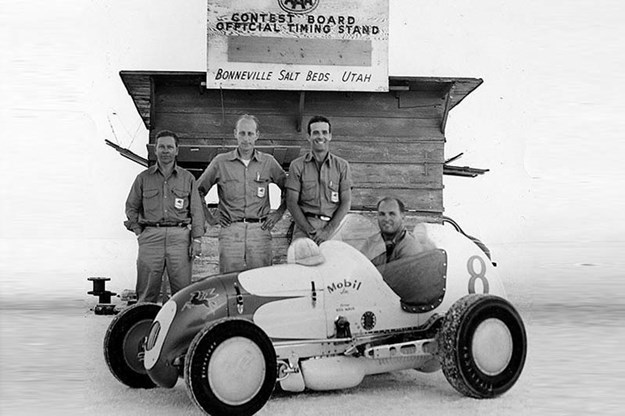
Did you know there’s a land speed record for Midget speeday cars? Of course there is. One of the pioneers in this was American Rex Mays. In 1949 he set a new record for midget race cars of 147.307mph (237km/h). Okay, so a lot of road cars will easily do that and more, but have a look at the thing and keep in mind this was on salt. Brave, very brave.
Write to Mick c/ouniquecars@primecreative.com.auor Unique Cars magazine, 379 Docklands Drive, Docklands, Victoria 3008
Unique Cars magazine Value Guides
Sell your car for free right here
Get your monthly fix of news, reviews and stories on the greatest cars and minds in the automotive world.
Subscribe

.jpg)










